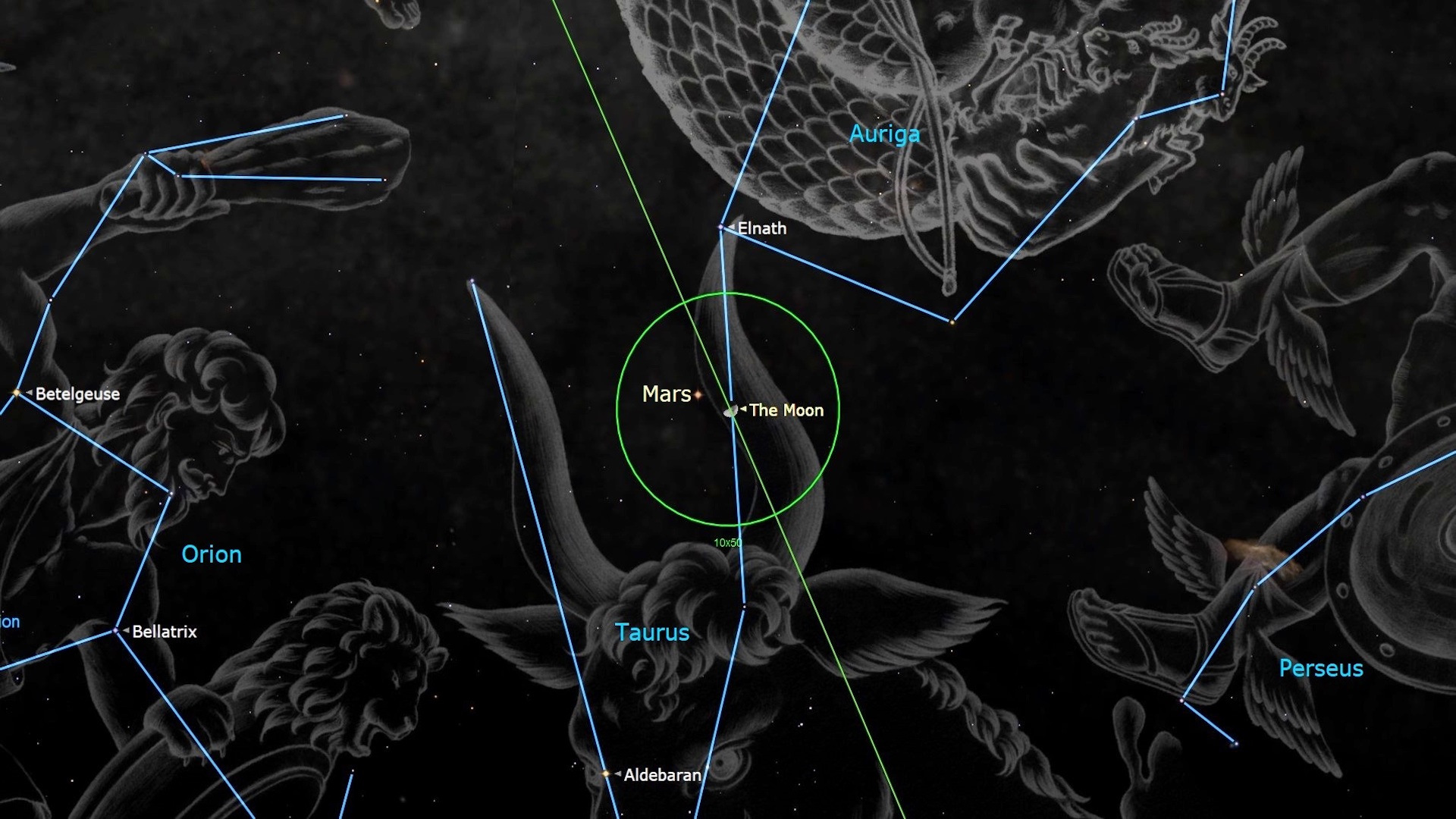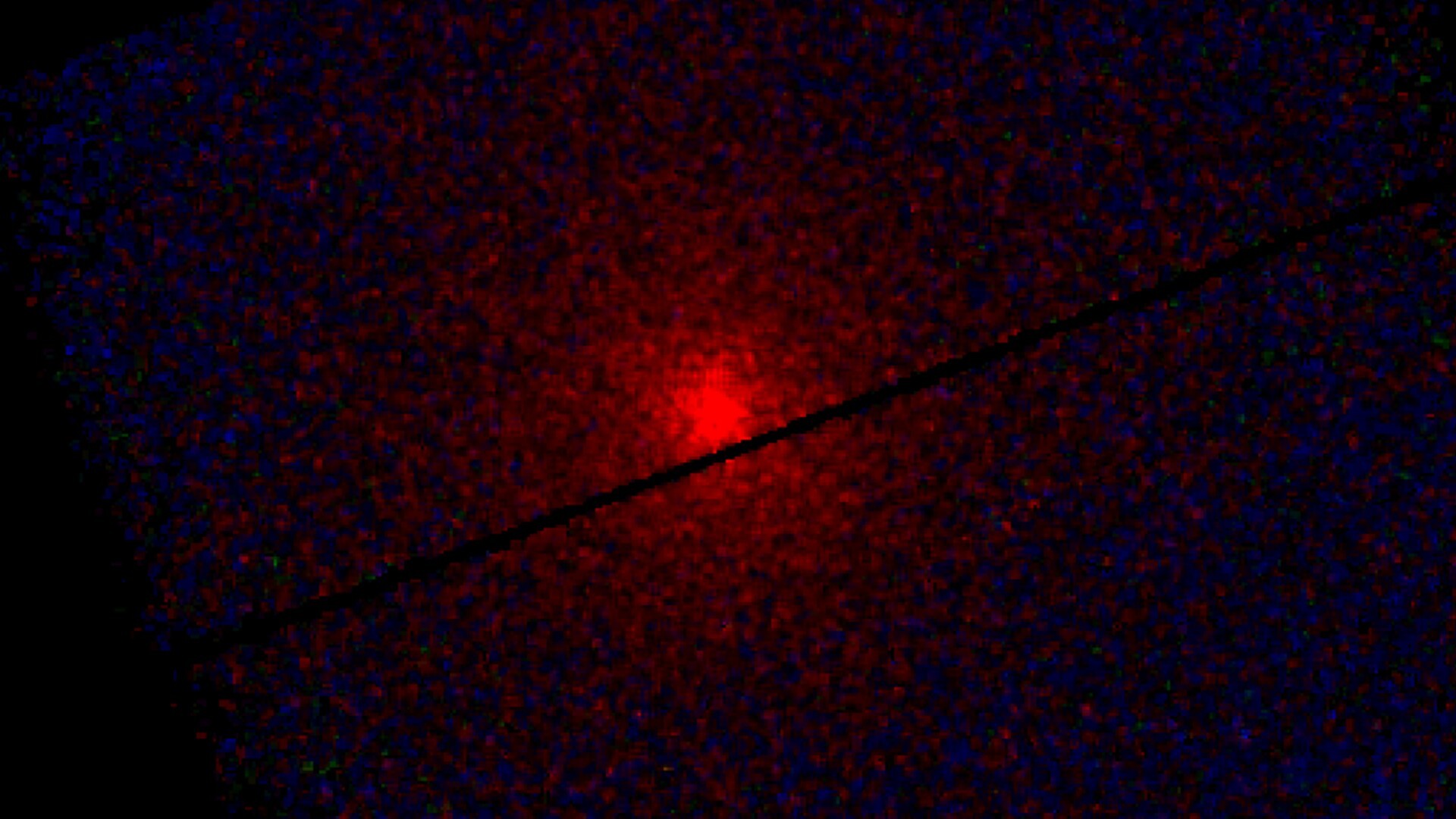Watch the moon visit Mars for a close encounter on Feb. 27
On Monday (Feb. 27) the moon will pass Mars by just 1 degree, so close that some parts of the world will see it cover the Red Planet.

The moon makes its close approach to Mars on Monday (Feb. 27) with the pair of celestial objects also sharing the same right ascension in the night sky, an arrangement called a "conjunction."
During the conjunction, both the moon and Mars will be in the constellation of Taurus, the bull. The moon will have a magnitude of -12.0, with the minus prefix indicating a particularly bright object over Earth, while Mars will have a magnitude of 0.4.
According to In the Sky from New York City the conjunction between the third quarter moon and the Red Planet will be visible soon after the moon rises at 10:54 a.m. EST (1554 GMT). The conjunction will remain observable well into the night until just before the moon sets at around 2:14 a.m. EST on Feb. 28 (0714 GMT).
Related: Night sky, February 2023: What you can see tonight [maps]

Want to see Mars disappear behind the moon? We recommend the Celestron Astro Fi 102 as the top pick in our best beginner's telescope guide.
Both the moon and Jupiter with have a right ascension of 05h08m00s during the conjunction, but the moon will have a declination of +26°23' and Mars a declination of +25°20'. There will be a massive difference in the size of the two bodies in the night sky with Red Planet having an angular size of 8"2 while the third quarter moon has an angular size of 29'56"0.
The moon's angular size is a result of its proximity to Earth and this will have another consequence on Monday. Because the moon is so close to Earth, just 238,000 miles (384,000 kilometers) away on average, it appears in different places in the night sky, separated by as much as 2 degrees to observers in different spots across the planet's surface.
Mars is at a much greater distance from Earth than the moon at an average of 101 million miles (164 million kilometers) away, and thus it appears at more or less the same place in the sky for observers around the globe.
Breaking space news, the latest updates on rocket launches, skywatching events and more!
This means while skywatchers in New York are observing the moon next to Mars, observers in some regions of the planet will see the moon cover the Red Planet, an arrangement called a lunar occultation. On Monday, Feb. 27, the lunar occultation of Mars will be visible from eastern Greenland, Svalbard, and western Russia, according to In the Sky.
Despite the fact that the objects will make a close approach, technically known as an appulse, during the conjunction the moon and Mars still won't be close enough to be viewed in the narrow field of view of most telescopes (depending on your magnification level), although the occultation will. The conjunction will be visible in the wider field of view of binoculars and should be observable with the naked eye in the right conditions, however.
If you're hoping to catch a glimpse of the lunar occultation moon and Mars individually during the conjunction our guides for the best telescopes are a great place to start. If you want to glimpse the conjunction between the two, Space.com's best binoculars guide should prove useful.
If you're looking to snap photos of the night sky, check out our guide on how to photograph the moon, as well as our best cameras for astrophotography and best lenses for astrophotography.
Editor's Note: If you snap the Mars and the moon in conjunction and would like to share it with Space.com's readers, send your photo(s), comments, and your name and location to spacephotos@space.com.
Follow us @Spacedotcom, or on Facebook and Instagram.

Robert Lea is a science journalist in the U.K. whose articles have been published in Physics World, New Scientist, Astronomy Magazine, All About Space, Newsweek and ZME Science. He also writes about science communication for Elsevier and the European Journal of Physics. Rob holds a bachelor of science degree in physics and astronomy from the U.K.’s Open University. Follow him on Twitter @sciencef1rst.

